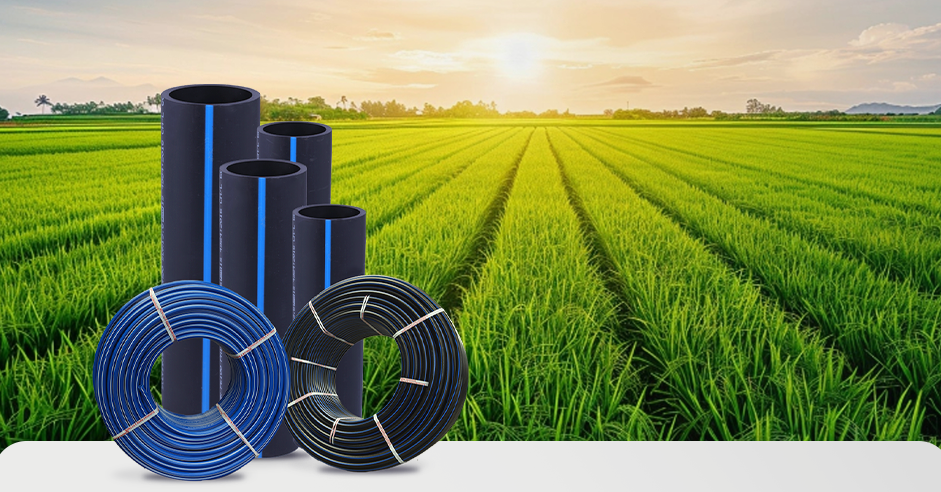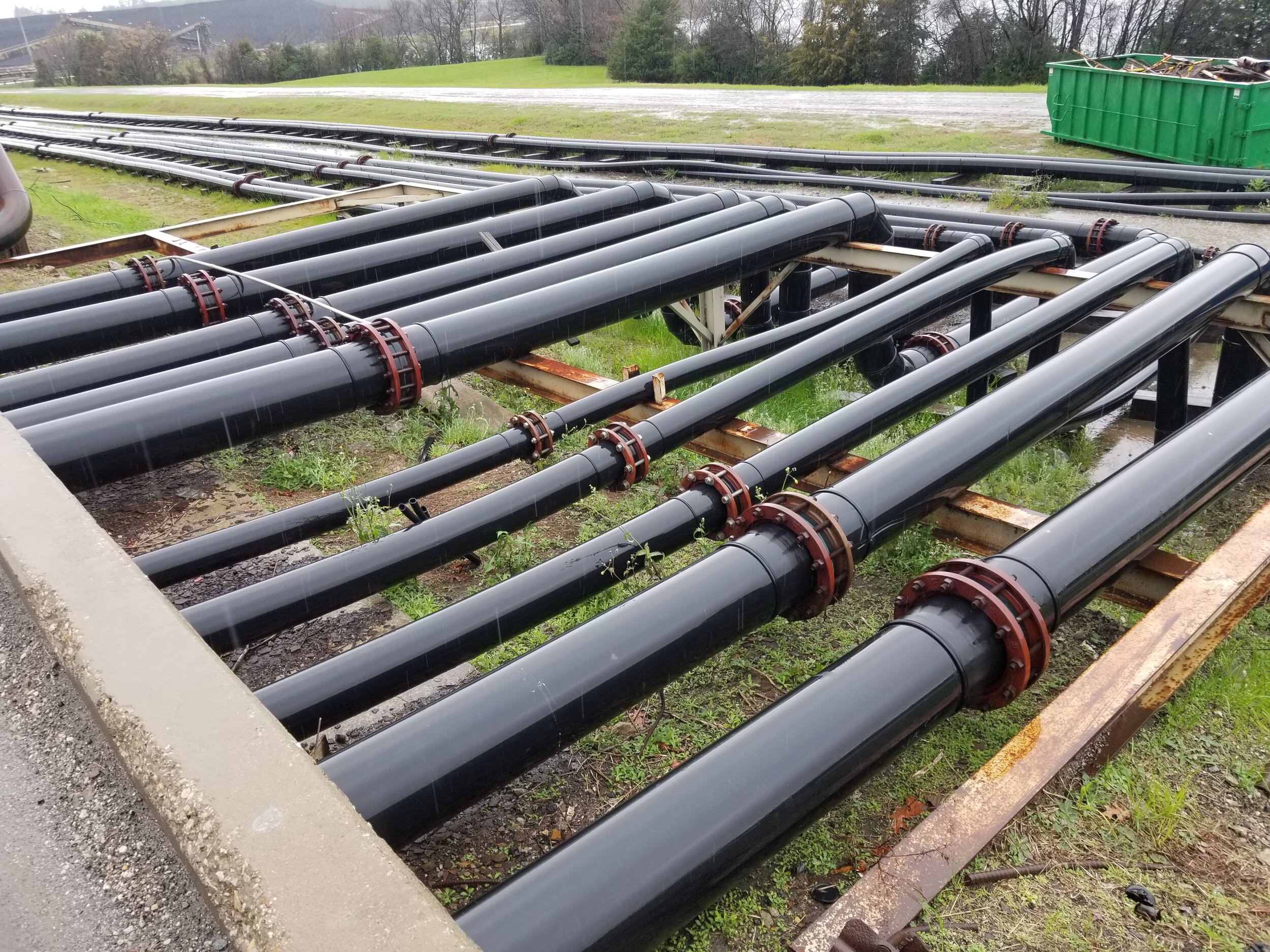Check Out the Production Refine Behind High-Quality HDPE Pipeline and Its Applications
The production procedure of high-grade HDPE pipes is detailed and systematic. It begins with the choice of resources that boost performance. Following this, ethylene undergoes polymerization to form resin, which is then shaped via extrusion. Quality assurance is extremely important, ensuring that the final item fulfills stringent criteria. The journey of HDPE pipelines does not finish with production. Their applications throughout various sectors reveal a wider importance worth analyzing.
Understanding HDPE: Residences and Advantages

High-density polyethylene (HDPE) is a functional polycarbonate understood for its sturdiness and resistance to various ecological variables. This material displays exceptional tensile toughness, making it suitable for demanding applications. Its low-density framework adds to a lightweight item, facilitating convenience of managing and installation. HDPE likewise showcases impressive resistance to chemicals, which decreases degradation when revealed to rough substances.
The product's reduced dampness absorption additionally enhances its durability, making it excellent for usage in pipes and tank. Furthermore, HDPE is immune to ultraviolet (UV) radiation, making sure that products keep their honesty even when subjected to sunshine. Its flexibility enables for the development of complex shapes without jeopardizing strength. The environment-friendly nature of HDPE, often stemmed from recycled materials, adds to its appeal, advertising lasting practices in production. Overall, these buildings and advantages make HDPE a favored selection for various commercial and customer applications.
Resources Selection for HDPE Manufacturing
The option of raw materials for HDPE production is necessary to confirm the end product fulfills the wanted specifications and quality requirements. High-density polyethylene (HDPE) is mostly generated from polymerized ethylene, originated from nonrenewable fuel sources such as natural gas or unrefined oil. The high quality of these feedstocks substantially influences the mechanical and thermal properties of the final HDPE.
Additives additionally play a substantial role in enhancing HDPE's performance, consisting of antioxidants, UV stabilizers, and colorants, which enhance resilience and resistance to ecological variables. The option process have to think about not just the chemical structure of the raw materials however likewise their processing attributes to ensure effective manufacturing.
Additionally, the sourcing of raw materials need to focus on sustainability and conformity with ecological laws, as liable methods are necessary in today's market. Eventually, mindful raw material choice lays the foundation for producing high-quality HDPE pipes appropriate for varied applications.
The Extrusion Process: Shaping HDPE Pipe
The extrusion procedure plays a crucial role fit HDPE pipes, starting with thorough product preparation methods that ensure optimal flow and consistency. Equally crucial is the design of the die, which straight affects the final measurements and surface area top quality of the pipe. Together, these aspects add considerably to the efficiency and quality of HDPE pipe production.
Material Prep Work Methods
Effective production of HDPE pipelines starts with thorough product preparation techniques, particularly the extrusion process. During this stage, high-density polyethylene resin is very first dried out to remove dampness, ensuring excellent flow attributes. The material is after that fed right into the extruder, where it goes through home heating and melting, changing right into a viscous state. This home heating procedure is meticulously controlled to maintain the material's stability and performance. The molten HDPE is required via a die, shaping it into a continual pipe type. Correct temperature level administration throughout extrusion is necessary, as it directly influences the material's residential or commercial properties and the end product top quality. As soon as shaped, the HDPE pipeline is cooled and cut to defined lengths, prepared for subsequent processing and applications.
Die Style Significance
Precision in die layout plays a crucial duty in the extrusion process of HDPE pipes. The die acts as the last shaping device, straight influencing the pipe's measurements, wall density, and surface coating. A well-designed die assurances consistent material circulation, decreasing defects such as abnormalities and weak points. The geometry of the die should be optimized to suit the certain properties of HDPE, including its thickness and thermal habits during extrusion. In addition, the cooling price of the product as it passes with the die can markedly influence the pipeline's structural stability. Spending in innovative die modern technology is vital for suppliers aiming to create top notch HDPE pipelines that meet industry criteria and customer expectations.
High Quality Control Actions in HDPE Production
Although different factors affect the top quality of HDPE pipe production, effective top quality control procedures are important to assure uniformity and reliability in the end product. Secret quality assurance practices include strenuous product evaluation, validating that the raw polyethylene fulfills well-known criteria for purity and density. Throughout the extrusion procedure, parameters such as temperature, pressure, and cooling time are very closely kept track of to keep dimensional accuracy and structural honesty
Additionally, post-production screening is important; makers frequently conduct hydrostatic examinations to assess the pipeline's toughness and resistance to pressure. Aesthetic inspections for surface flaws further boost high quality guarantee. Qualification from appropriate standards organizations, like ASTM or ISO, supplies an additional layer of credibility. By carrying out these thorough quality assurance procedures, producers can minimize flaws, enhance efficiency, and guarantee that the HDPE pipes satisfy the specific needs of numerous applications, ultimately causing client contentment and depend on in the product.
Applications of HDPE Pipeline Throughout Industries
HDPE pipes are utilized across numerous fields because of their toughness and convenience. In water circulation systems, they assure effective shipment, while in wastewater management, they provide reputable remedies for waste transportation. Furthermore, farming watering networks take advantage of HDPE's resistance to deterioration and adaptability, making it a perfect option for contemporary farming techniques.

Water Circulation Systems
A considerable number of markets rely upon high-density polyethylene (HDPE) pipes for effective water circulation systems. Known for their longevity and resistance to corrosion, HDPE pipes are commonly made get more info use of in municipal water system networks, farming irrigation, and industrial applications. Their lightweight nature promotes easy handling and setup, lowering labor prices and time. Furthermore, HDPE pipelines can accommodate different stress levels, making them ideal for both low and high-pressure systems. hdpe pipe in stock Midland TX. The flexibility of the product allows for seamless assimilation into existing infrastructure, minimizing the demand for extensive excavation. Additionally, HDPE's resistance to chemical seeping assurances that the water provided remains safe and clean, making it a suitable selection for maintaining the top quality of safe and clean water throughout numerous sectors
Wastewater Administration Solutions
Effective water distribution systems likewise lead the means for ingenious wastewater monitoring options, where high-density polyethylene (HDPE) pipes play a considerable duty. Popular for their longevity and resistance to corrosion, HDPE pipes are excellent for transporting wastewater in various settings. Their adaptability enables simple installment in intricate settings, minimizing the need for comprehensive excavation. Furthermore, HDPE's smooth indoor surface area lowers friction, enhancing circulation rates and effectiveness. These pipelines are likewise immune to chemical leaching, guaranteeing that impurities do not endanger the surrounding environment. Industries, towns, and treatment centers increasingly count on HDPE pipes for their integrity and long life, making them a preferred selection for modern-day wastewater monitoring systems. This adaptability highlights the essential value of HDPE pipes across many applications.
Agricultural Irrigation Networks
Agricultural watering networks benefit considerably from making use of high-density polyethylene (HDPE) pipes, which offer efficient and dependable water delivery to crops. HDPE pipes are lightweight, making them very easy to move and mount, while their adaptability enables numerous setups in diverse surfaces. These pipelines demonstrate outstanding resistance to corrosion, chemicals, and UV radiation, making sure longevity in harsh farming environments. Additionally, their smooth interior surface area reduces rubbing loss, enhancing water flow and minimizing power expenses associated with pumping. The durability of HDPE pipelines, commonly going beyond 50 years, adds to reduce upkeep and substitute expenses. Farmers progressively rely on HDPE pipelines to boost irrigation effectiveness and advertise sustainable farming methods, ultimately leading to enhanced crop yields and source preservation.

Future Patterns in HDPE Pipe Technology
As the demand for lasting and efficient framework grows, innovations in HDPE pipeline innovation are positioned to transform various markets. Emerging trends include the integration of smart innovations, such as sensing units and IoT capacities, which assist in real-time tracking of pipeline conditions, decreasing upkeep prices and preventing leakages. In addition, the advancement of innovative manufacturing methods, such as 3D printing, is making it possible for the manufacturing of complicated, tailored pipe layouts that accommodate certain job needs.
The emphasis on recycling and round economy practices is driving the innovation of HDPE pipes made from recycled products, boosting sustainability. Boosted jointing techniques, such as electro-fusion and mechanical fittings, are likewise boosting installment efficiency and integrity. The growing emphasis on ecological laws is pressing manufacturers to embrace greener production processes, guaranteeing that HDPE pipelines not just fulfill industry requirements however likewise promote a more lasting future for facilities growth.
Regularly Asked Questions
Exactly How Does HDPE Contrast to Various Other Plastic Materials?
HDPE outperforms lots of other plastic products concerning sturdiness, chemical resistance, and adaptability. Its low thickness and high tensile stamina make it perfect for various applications, often exceeding alternatives in both performance and long life.
What Are the Ecological Effects of HDPE Production?
The environmental influences of HDPE production include greenhouse gas emissions, power usage, and potential pollution from producing processes. Additionally, improper disposal can result in soil and water contamination, elevating problems about long-term environmental effects.
Can HDPE Pipes Be Reused?
Yes, HDPE pipes can be recycled. Lots of centers accept utilized HDPE for handling, changing it right into new products. This recycling adds to sustainability initiatives, minimizing plastic waste while preserving sources and power in the manufacturing cycle.
What Is the Lifespan of HDPE Pipeline?

How Do Temperature Variants Influence HDPE Pipeline Efficiency?
Temperature level variants greatly affect HDPE pipeline performance, affecting versatility and stamina. Heats can lead to softening, while low temperature levels may create brittleness, ultimately affecting the pipe's toughness and suitability for different applications in diverse atmospheres.